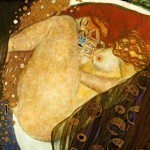What can a naturalist celebrate in March?
This post is part of Naturalistic Traditions, a column exploring naturalism in Pagan ways. This column will cover seasonal celebrations, historical and contemporary movements, and ritual practices.
Natural cycles
March 19th-20th is an Equinox. That is, it is one of only two times a year when the tilt of the earth’s axis is leaning neither toward nor away from the sun. The name derives from the Latin aequus (equal) and nox (night), because the length of day and night are even. It is thus a day of balance.
Those in the Northern Hemisphere experience the Vernal or Spring Equinox, after which daylight begins to dominate and summer beckons. Meanwhile, those in the Southern Hemisphere experience the Autumnal Equinox, with winter on the way.
The precise date and time of the Equinox can be found at archaeoastronomy.com.
Neopagan traditions
In the Northern Hemisphere, the Vernal Equinox is celebrated as Ostara (also spelled Eostar, Eostre, or Eastre), deriving from the name of a Germanic goddess to whom the month of the same name was holy. It is the same word from which we get Easter. This time of year is a moment of bursting forth, of life emerging from darkness out into the light.
Mike Nichols (2009) calls the celebration Lady Day, and recognizes it as the time when the Goddess welcomes the young Sun God’s embrace and conceives a child that will be born nine month’s later at the Winter Solstice. This fits well with the season of spring, with its blossoming buds and creatures frolicking in the new warmth.
Jon Cleland Host describes Ostara:
It corresponds to the energy and happiness of young children, when lives begin to take visible shape. This rebirth of life is celebrated with traditional symbols of emerging life, such as eggs. (Naturalistic Paganism yahoo group)
Host provides a method for coloring eggs with natural dyes, and suggests making equinox cookies – half dark, half light. See the group’s files section for details.
Glenys Livingstone of Pagaian recommends discovering the balance of light and dark in your own breath:
Feel the balance in this moment – Earth as She is poised in relationship with the Sun. Feel for your own balance of light and dark within – this fertile balance of tensions. Breathe into it. Breathe in the light, swell with it, let your breath go into the dark, stay with it. Shift on your feet, from left to right, feel your centre…breathe it in.
In our part of the Earth, the balance is about to tip into the light. Feel the shift within you, see in your mind’s eye the energy ahead, the light expanding. Feel the warmth of it. Breathe it in. (Livingstone, 2008)
She also suggests representing the Spring Equinox with a daffodil with bulb and roots exposed, “signifying the full story of Spring Equinox, which is, emergence from the dark: the joy of this blossoming is rooted in the journey through the dark.”
Finally, Livinstone remembers the myth of Persephone’s ascent from the underworld at this time. It seems undeniable that the Mysteries of Eleusis, to which Persephone’s myth belonged, imparted hopes for a blessed afterlife. Yet it also had a naturalistic side – the cycle of seasons and growth of life-sustaining grain require no supernatural belief to appreciate their mystery. Hence, naturalists may take inspiration from the ascent of the goddess, like a shoot of wheat emerging from the soil, representing the hope of spring.
Incidentally, there is good reason to believe the Athenians recognized the barren season, when Persephone was in the underworld, as the blaze of Attica’s summer, not winter (Nilsson, 1972). Yet many Contemporary Pagans adapt the myth to their local climate. Thus, the end of winter is a fitting time for Persephone’s ascent for those in four-season areas of the Northern Hemisphere.
Those in the Southern Hemisphere celebrate Mabon at this time.
Civic and scientific traditions
Paul Harrison’s Elements of Pantheism (2004) calls attention to two special days this month: Einstein’s birthday and International Women’s Day.
 Albert Einstein’s birthday as well as Pi Day is March 14. Einstein, born in 1879, was the celebrated mind that gave us the theory of relativity and E = mc2. The mathematical constant π or pi expresses the ratio of any Euclidean circle’s circumference to its diameter. Its decimal representation never ends and never repeats (though it is commonly abbreviated to 3.14). Princeton is celebrating the 14th with pie and an Einstein look-alike contest.
Albert Einstein’s birthday as well as Pi Day is March 14. Einstein, born in 1879, was the celebrated mind that gave us the theory of relativity and E = mc2. The mathematical constant π or pi expresses the ratio of any Euclidean circle’s circumference to its diameter. Its decimal representation never ends and never repeats (though it is commonly abbreviated to 3.14). Princeton is celebrating the 14th with pie and an Einstein look-alike contest.
International Women’s Day is March 8th:
Women’s organisations and governments around the world have also observed IWD annually on 8 March by holding large-scale events that honour women’s advancement and while diligently reminding of the continued vigilance and action required to ensure that women’s equality is gained and maintained in all aspects of life. (from www.internationalwomensday.com)
In many countries, men honor mothers, wives, girlfriends, colleagues, and so forth with flowers and small gifts.
About the author
B. T. Newberg has been practicing meditation and ritual from a naturalistic perspective since 2000. After experimenting with Agnosticism, Buddhism, Contemporary Paganism, and Spiritual Humanism, he currently combines the latter two into a dynamic path embracing both science and myth. He is the editor of a community blog for naturalistic spirituality called Humanistic Paganism, which just published an anthology called Year One with over a dozen contributing authors. After growing up in Minnesota, and living in England, Malaysia, and Japan, B. T. Newberg currently resides in South Korea with his wife and cat.
References
Harrison, P. (2004). The Elements of Pantheism. Coral Springs, FL: Llumina Press.
Livingstone, G. (2008). PaGaian Cosmology. New York: iUniverse.
Nichols, M. (2009). Candlemas: The light returns. The Witches’ Sabbats. www.thewitchessabbats.com.
Nilsson, M. P. (1972). Greek Folk Religion. Philadelphia, PA: Philadelphia University Press.



















